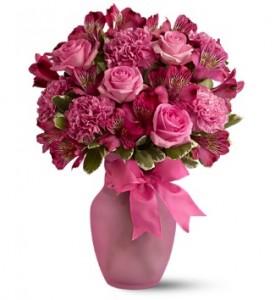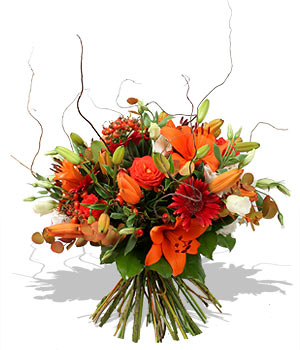Flowers aren’t only known for their captivating and hypnotizing beauty. They were also in fact popular in the ancient times as effective medicines for a host of illnesses. They served to be one of the constituents of herbal medicines for over 4000 year, which means they significantly took part in the oldest means of health care in history. It was actually in 2800 B.C when the first written record of herbalism was published by Emperor Shennong of China. Many progress in other countries followed and during 200 A.D, Galen of Rome prepared the first classification system that paired common diseases with their herbal remedies. Herbal medicine continued to flourish over hundreds of centuries until 21st century Europe supported the compulsory clinical testing of all herbal medicines for regulatory purposes.
Today, most of prescription drugs contain at least single active ingredient obtained from plants while some are synthesized to mimic a plant compound. Salicylic acid actually originated from white willow bark. Vincristine, an anticancer agent comes from periwinkle, while malaria-fighting quinine can be obtained from Cinchona bark. Opium poppy yields morphine and codeine. Indeed, herbal plants alongside with flowers have provided an inextricable means for the advancement of modern medicine.
Even though modern drugs serve to be the most favored form of medicine these days, herbal medicine and flowers have still found their way to the heart of many advocates of natural medicine, which is known today as alternative medicine.
As natural sources of drugs, flowers may provide less harmful side effects to human body, which is why many individuals continue to believe them as modern medical interventions that can improve and maintain overall body wellness.
In line with this subject, here are flowers which are still being used today as alternative medicine for common illnesses:
1.Yarrow (Achillea millefolium)
-Its flowers are the most medicinally active part because of their stimulant effect.
– Valued for treatment of colds and influenza
– Has effect on circulatory, digestive, excretory, and urinary systems.
– Has astringent effect
– Decoctions are used to treat haemorrhoids and headaches
– Flower infusion is said to treat hay fever and allergies
2.Pasque flower (Pulsatilla species)
– It’s used to treat menstrual cramps
– It also has sedative effect which is used on painful conditions
– Although toxic if fresh and highly poisonous if taken in large amount, this flower is still valued for its advantageous effect on both male and female reproductive systems
– It’s also used to alleviate ear pain
3. Arnica (Arnica montana)
– Toxic if ingested but very useful when prepared properly in topical forms of cream or dilution.
– It’s used to tread poor blood circulation and frostbite.
– It’s also strictly prohibited to apply cream preparations on open wounds.
4. Echinacea (Echinacea angustifola)
– One study suggested that this flower has antitumor properties.
– It’s also concluded that it can cut the chance of getting a cold or shorten the duration of cold when using its homeopathic preparation.
– Native Americans used this flower to treat snakebites, fever, and wounds.
– It’s said that it can also treat viral, bacterial, and fungal infections and even viral based arthiritis.
– The most medicinally active part is its roots.
5. Pot Marigold (Calendula)
– Has antiviral, anti-genotoxic, and anti-inflammatory properties.
– It’s widely used as topical treatment for acne.
– Traditionally, it’s used to alleviate menstrual cramps and constipation.
6. California Poppy (Eschscholzia californica)
– It’s used as a gentle sedative that works for people with trouble sleeping.
– It’s safe for children and can be added to teas to relieve stress and tension.
– Menstrual cramps and pains can also be treated by the aerial part of this flowering plant.
7. Lavender (Lavadula officinalis)
An effective sedative and calming remedy, perfect for headaches and migraines.
– Its flower oil has a soothing effect on sunburns.
8. Chamomile (Matricaria recutita)
– Has sedative and calming effects especially on digestive system.
– It’s used to treat insomnia and some skin problems.
9. Evening Primrose (Oenothera biennis)
– Its high gamma-linoleic acid content is said to have anti-breast cancer properties.
– Its seed oil is used to treat skin problems, arthritis, and premenstrual stress syndrome.
10. Sunflower (Helianthus annus)
– Its seeds have diuretic and expectorant properties that are used to treat bronchia, laryngeal, and pulmonary problems.
– The tincture of its flowers and leaves is said to be a good treatment for bronchiectasis if combined with balsamics.
– The infusion of its flowers can also treat menstruation pains and ulcers.
11. Viola (Viola species)
– It flowers are rich in Vitamin A and C and also contain an antioxidant called anthocyanin.
– It cures eczema and varicose vein.
– Can also alleviate urinary problems.
Given the many examples of medicinal flowers, we hope to give another substantial insight and knowledge. As you buy flowers after this, perhaps you will be reminded of the greatness of flowers when it comes to their purpose. It might be even more meaningful if you will be inspired by their beauty and depth of their existence.

